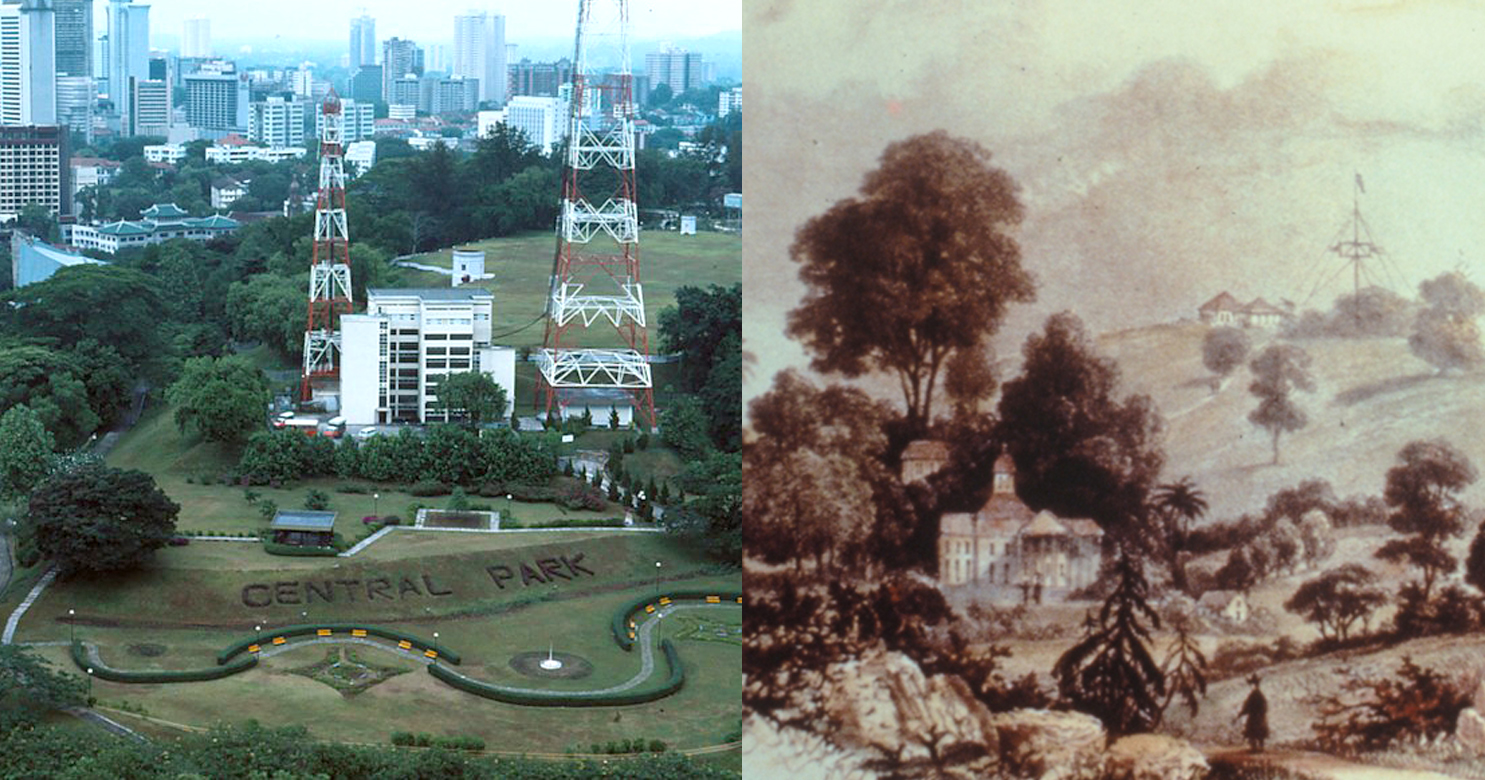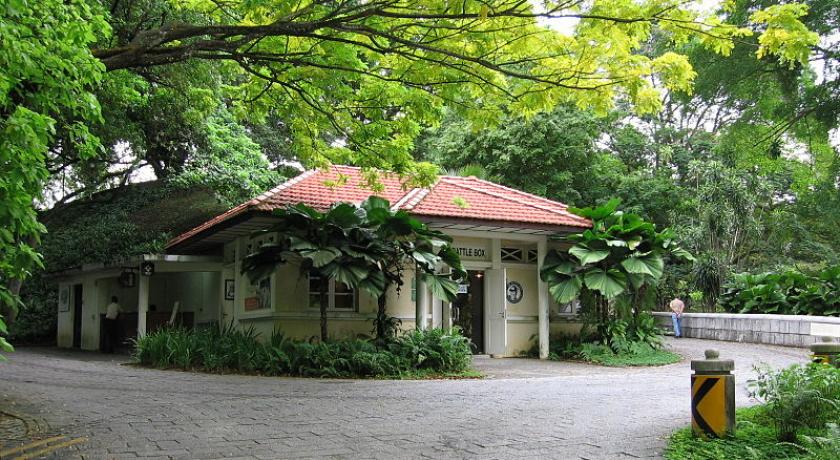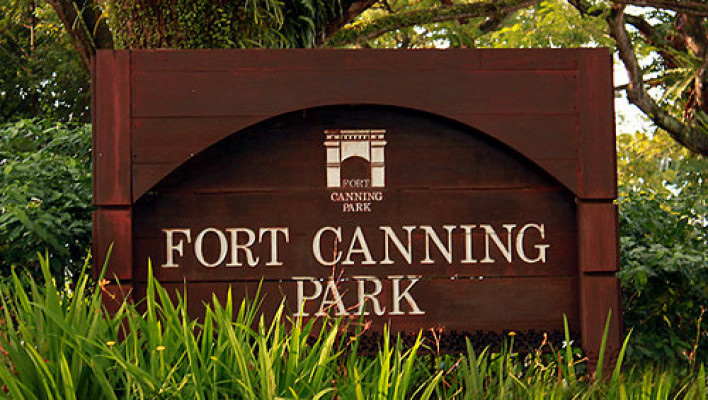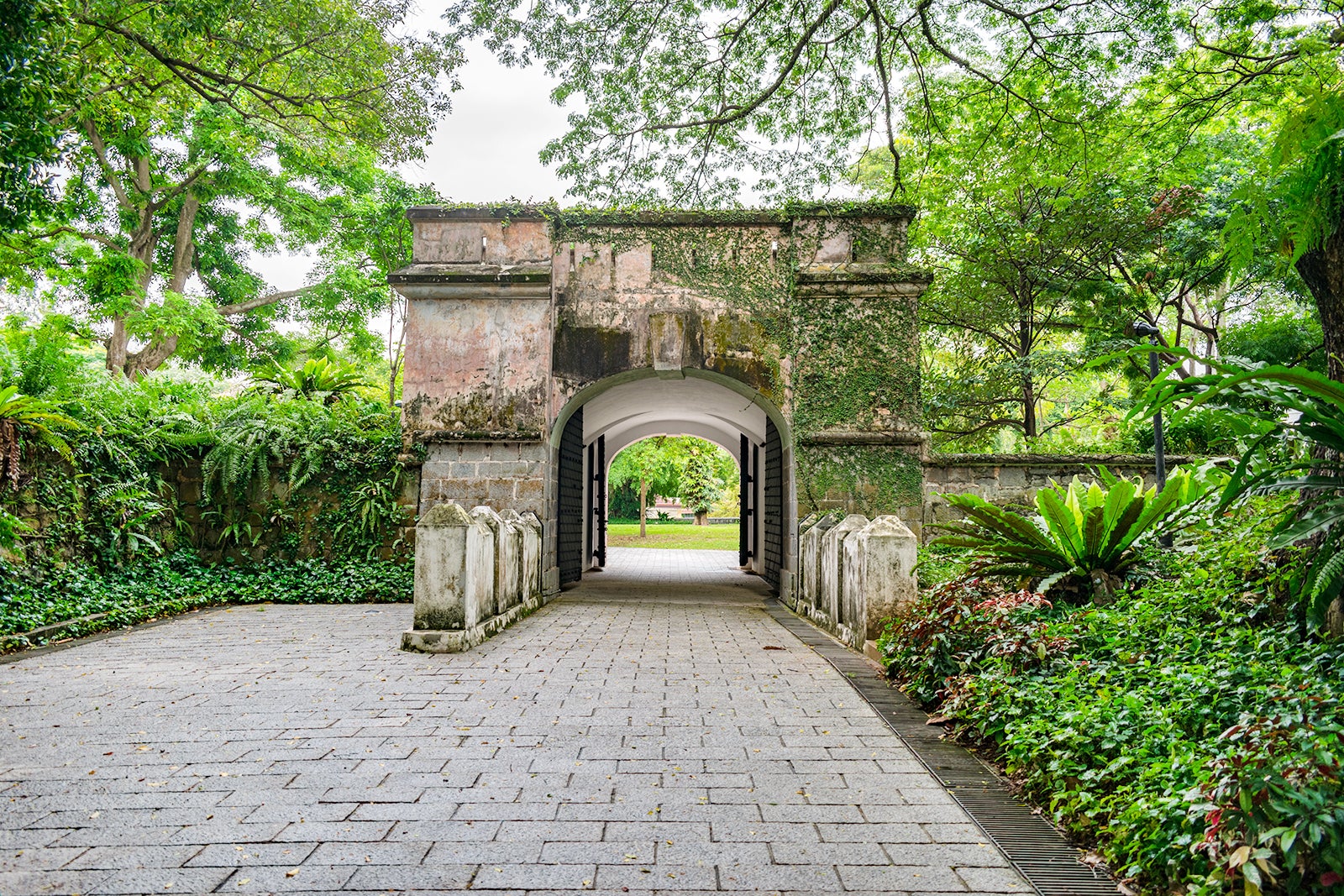Your History of fort canning from forbidden images are ready. History of fort canning from forbidden are a topic that is being searched for and liked by netizens now. You can Download the History of fort canning from forbidden files here. Download all royalty-free vectors.
If you’re looking for history of fort canning from forbidden images information linked to the history of fort canning from forbidden topic, you have pay a visit to the right site. Our website always provides you with suggestions for viewing the maximum quality video and picture content, please kindly hunt and find more enlightening video content and graphics that fit your interests.
History Of Fort Canning From Forbidden. Later in the year 1972 the whole place was. Keramat Iskandar Shah Keramats are often tombs and it has been claimed that this site is the burial place for Sri Sultan Iskandar Shah the last of the five kings who ruled Singapore during the golden age of the Malay Kingdom in the 14th century. Sir Stamford Raffles had a bungalow built on top of the hill where he and subsequent colonial governors resided. In just 70 days during the Second World War Japanese forces had made their way down the Malayan Peninsular crossed over to Singapore and were nibbling at the fringes of the city.
 Fort Canning To Recreate Historic Gardens Of S Pore Completed By June 2019 Mothership Sg News From Singapore Asia And Around The World From mothership.sg
Fort Canning To Recreate Historic Gardens Of S Pore Completed By June 2019 Mothership Sg News From Singapore Asia And Around The World From mothership.sg
Prior to 1822 Fort Canning Hill was known as Bukit Larangan meaning Forbidden Hill where ancient kings were believed to be buried. Later in the year 1972 the whole place was. Sir Stamford Raffles had a bungalow built on top of the hill where he and subsequent colonial governors resided. Built in 1936 this was the command centre during the Malayan Campaign and. Singapore the remarkable city-state in Asia is regarded as one of the most dynamic societies on earth and offers a great many sites. A freshwater spring used to flow from the face of Fort Canning Hill at this location.
Fort Canning Hill was known as Government Hill from 1822 to 1859.
A hill with a history that goes back 700 years. This green oasis was once known as Forbidden Hill as it was the seat of royalty for rulers of Temasek Sea Town in the 1300s and also where ancient kings were buried. Beautiful Fort Canning Park formerly called Forbidden Hill was once the residence of Singapores native kings before becoming a British military base. The reservoir in 1926 and recent archaeological digs reveal that the palace of ancient Malay rulers. It housed many facilities and buildings including a military command centre and the Governors House. The early colonials found sandstone foundation blocks dating back to the 14th century marking a large palatial building along its slope.
 Source: youtube.com
Source: youtube.com
In just 70 days during the Second World War Japanese forces had made their way down the Malayan Peninsular crossed over to Singapore and were nibbling at the fringes of the city. The house served as Government House until 1859 when it was replaced by a fort. A freshwater spring used to flow from the face of Fort Canning Hill at this location. Beautiful Fort Canning Park formerly called Forbidden Hill was once the residence of Singapores native kings before becoming a British military base. The reservoir in 1926 and recent archaeological digs reveal that the palace of ancient Malay rulers.
 Source: sassymamasg.com
Source: sassymamasg.com
The house served as Government House until 1859 when it was replaced by a fort. The early colonials found sandstone foundation blocks dating back to the 14th century marking a large palatial building along its slope. This green oasis was once known as Forbidden Hill as it was the seat of royalty for rulers of Temasek Sea Town in the 1300s and also where ancient kings were buried. Things only began to change 430 years after with the arrival of Raffles in 1819. The Historic Fort Canning Hill.
 Source: de.smarttravelapp.com
Source: de.smarttravelapp.com
A hill with a history that goes back 700 years. Artefacts uncovered during the construction of. It has been the exclusive address of many of Singapores rulers and colonial leaders dating. Beautiful Fort Canning Park formerly called Forbidden Hill was once the residence of Singapores native kings before becoming a British military base. Fort Canning was originally known as Bukit Larangan or Forbidden Hill.

Pancur Larangan Forbidden Spring at Fort Canning Park. It was utilised by both the early sultans and the colonial overlords. The reservoir in 1926 and recent archaeological digs reveal that the palace of ancient Malay rulers. Keramat Iskandar Shah Keramats are often tombs and it has been claimed that this site is the burial place for Sri Sultan Iskandar Shah the last of the five kings who ruled Singapore during the golden age of the Malay Kingdom in the 14th century. It was known at the time of Raffles arrival.

It is the highest point in the city and has had a varied history tied intrinsically to the island. WALK WITH HISTORY IN THE GARDENS Fort Canning Park was once known as Bukit Larangan or the Forbidden Hill. It is the highest point in the city and has had a varied history tied intrinsically to the island. Stood on the summit of what was once known as Forbidden Hill. The house served as Government House until 1859 when it was replaced by a fort.
 Source: ifonlysingaporeans.blogspot.com
Source: ifonlysingaporeans.blogspot.com
It was later renamed Government Hill by Sir Stamford Raffles and subsequently named after Viscount Charles John Canning Governor-General and first. The fort was named after the first Viceroy of India Charles John Canning and became a formidable military base for Singapore Japanese and British armed forces. It was utilised by both the early sultans and the colonial overlords. WALK WITH HISTORY IN THE GARDENS Fort Canning Park was once known as Bukit Larangan or the Forbidden Hill. Fort Canning Hill originally known as Bukit Larangan or Forbidden Hill in Malay has been a local landmark in the city since Singapores earliest recorded history.
 Source: sassymamasg.com
Source: sassymamasg.com
Built in 1936 this was the command centre during the Malayan Campaign and. The reservoir in 1926 and recent archaeological digs reveal that the palace of ancient Malay rulers. It was later renamed Government Hill by Sir Stamford Raffles and subsequently named after Viscount Charles John Canning Governor-General and first. Fort Canning Hill formerly known as Bukit Larangan Malay for Forbidden Hill and Government Hill is one of the most historic landmarks in Singapore. Subsequent residents paid no attention to these remains and all of them including the Malay wall the ruins of an ancient orchard a bathing place some brick buildings pottery and coins on the Forbidden Hill Fort Canning Hill and the Singapore Stone inscription at the mouth of the Singapore River had disappeared by 1850.
 Source: honeykidsasia.com
Source: honeykidsasia.com
A hill with a history that goes back 700 years. Immerse yourself in military history at the Battlebox also known as Fort Canning Bunker. It was later renamed Government Hill by Sir Stamford Raffles and subsequently named after Viscount Charles John Canning Governor-General and first. Artefacts uncovered during the construction of. Fort Canning Hill formerly known as Bukit Larangan Malay for Forbidden Hill and Government Hill is one of the most historic landmarks in Singapore.
 Source: pelago.co
Source: pelago.co
During the 430 years the Fort Canning foothills down to Singapore River were resettled but the palace on the hill was abandoned and left in ruins. Fort Canning Park was originally known as Bukit Larangan or Forbidden. Beautiful Fort Canning Park formerly called Forbidden Hill was once the residence of Singapores native kings before becoming a British military base. During the 430 years the Fort Canning foothills down to Singapore River were resettled but the palace on the hill was abandoned and left in ruins. Fort Canning Park is steeped in ancient history.
 Source: travelsingapore.info
Source: travelsingapore.info
Things only began to change 430 years after with the arrival of Raffles in 1819. It was known at the time of Raffles arrival. Fort Canning Hill formerly known as Bukit Larangan Malay for Forbidden Hill and Government Hill is one of the most historic landmarks in Singapore. Stood on the summit of what was once known as Forbidden Hill. It was utilised by both the early sultans and the colonial overlords.
 Source: todayonline.com
Source: todayonline.com
In just 70 days during the Second World War Japanese forces had made their way down the Malayan Peninsular crossed over to Singapore and were nibbling at the fringes of the city. Fort Canning Hill originally known as Bukit Larangan or Forbidden Hill in Malay has been a local landmark in the city since Singapores earliest recorded history. Fort Canning Hill was known as Government Hill from 1822 to 1859. 6 Purportedly the resting place of the last king Iskandar Shah a keramat Muslim shrine dedicated to. Sir Stamford Raffles had a bungalow built on top of the hill where he and subsequent colonial governors resided.

The house served as Government House until 1859 when it was replaced by a fort. Fort Canning Hill was known as Government Hill from 1822 to 1859. Things only began to change 430 years after with the arrival of Raffles in 1819. Fort Canning was originally known as Bukit Larangan or Forbidden Hill. History Trail in Fort Canning.
 Source: jp.hotels.com
Source: jp.hotels.com
Hidden in secret tunnels deep under a hill top military commanders convene in what is now known as The Battlebox to deliberate the fate of hundreds of thousands. It housed many facilities and buildings including a military command centre and the Governors House. The Historic Fort Canning Hill. Hidden in secret tunnels deep under a hill top military commanders convene in what is now known as The Battlebox to deliberate the fate of hundreds of thousands. It has been the exclusive address of many of Singapores rulers and colonial leaders dating.
 Source: youtube.com
Source: youtube.com
Prior to 1822 Fort Canning Hill was known as Bukit Larangan meaning Forbidden Hill where ancient kings were believed to be buried. WALK WITH HISTORY IN THE GARDENS Fort Canning Park was once known as Bukit Larangan or the Forbidden Hill. Hidden in secret tunnels deep under a hill top military commanders convene in what is now known as The Battlebox to deliberate the fate of hundreds of thousands. It was later renamed Government Hill by Sir Stamford Raffles and subsequently named after Viscount Charles John Canning Governor-General and first. Fort Canning Park is steeped in ancient history.
 Source: travelinsingapore.com
Source: travelinsingapore.com
It has been the exclusive address of many of Singapores rulers and colonial leaders dating. This green oasis was once known as Forbidden Hill as it was the seat of royalty for rulers of Temasek Sea Town in the 1300s and also where ancient kings were buried. The fort was named after the first Viceroy of India Charles John Canning and became a formidable military base for Singapore Japanese and British armed forces. Hidden in secret tunnels deep under a hill top military commanders convene in what is now known as The Battlebox to deliberate the fate of hundreds of thousands. Immerse yourself in military history at the Battlebox also known as Fort Canning Bunker.
 Source: todayonline.com
Source: todayonline.com
The reservoir in 1926 and recent archaeological digs reveal that the palace of ancient Malay rulers. Prior to 1822 Fort Canning Hill was known as Bukit Larangan meaning Forbidden Hill where ancient kings were believed to be buried. WALK WITH HISTORY IN THE GARDENS Fort Canning Park was once known as Bukit Larangan or the Forbidden Hill. Fort Canning Park is steeped in ancient history. It was the seat of the ancient Malay Kingdom of Singapura in the 14 th century and it was also where Raffles constructed his official residence.

WALK WITH HISTORY IN THE GARDENS Fort Canning Park was once known as Bukit Larangan or the Forbidden Hill. The reservoir in 1926 and recent archaeological digs reveal that the palace of ancient Malay rulers. Fort Canning Hill formerly known as Bukit Larangan Malay for Forbidden Hill and Government Hill is one of the most historic landmarks in Singapore. During the 430 years the Fort Canning foothills down to Singapore River were resettled but the palace on the hill was abandoned and left in ruins. It housed many facilities and buildings including a military command centre and the Governors House.
 Source: co.pinterest.com
Source: co.pinterest.com
Fort Canning Hill formerly known as Bukit Larangan Malay for Forbidden Hill and Government Hill is one of the most historic landmarks in Singapore. In just 70 days during the Second World War Japanese forces had made their way down the Malayan Peninsular crossed over to Singapore and were nibbling at the fringes of the city. Subsequent residents paid no attention to these remains and all of them including the Malay wall the ruins of an ancient orchard a bathing place some brick buildings pottery and coins on the Forbidden Hill Fort Canning Hill and the Singapore Stone inscription at the mouth of the Singapore River had disappeared by 1850. Singapore the remarkable city-state in Asia is regarded as one of the most dynamic societies on earth and offers a great many sites. Beautiful Fort Canning Park formerly called Forbidden Hill was once the residence of Singapores native kings before becoming a British military base.
This site is an open community for users to do sharing their favorite wallpapers on the internet, all images or pictures in this website are for personal wallpaper use only, it is stricly prohibited to use this wallpaper for commercial purposes, if you are the author and find this image is shared without your permission, please kindly raise a DMCA report to Us.
If you find this site serviceableness, please support us by sharing this posts to your own social media accounts like Facebook, Instagram and so on or you can also save this blog page with the title history of fort canning from forbidden by using Ctrl + D for devices a laptop with a Windows operating system or Command + D for laptops with an Apple operating system. If you use a smartphone, you can also use the drawer menu of the browser you are using. Whether it’s a Windows, Mac, iOS or Android operating system, you will still be able to bookmark this website.





